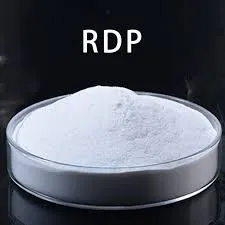
Ara . 16, 2024 12:18 Back to list
hydroxyethylcellulose based
Hydroxyethylcellulose-Based Materials Versatile Applications and Properties
Hydroxyethylcellulose (HEC) is a water-soluble polymer derived from cellulose, a natural polymer that constitutes the primary structural component of plant cell walls. HEC is produced by chemically modifying cellulose through the addition of hydroxyethyl groups, which enhances its properties for various applications. This article explores the characteristics, benefits, and diverse applications of HEC-based materials across multiple industries.
Properties of Hydroxyethylcellulose
HEC possesses several unique properties that make it a valuable ingredient in a wide range of formulations. One of its most notable features is its thickening ability. When dissolved in water, HEC forms a viscous solution, which can significantly enhance the texture and stability of products. This thickening property is particularly beneficial in industries such as cosmetics and personal care, where product viscosity can influence user experience and efficacy.
Another significant property of HEC is its emulsifying ability. HEC can help stabilize emulsions—mixtures of oil and water—by preventing the separation of these two phases. This capability is crucial in the formulation of creams, lotions, and other personal care products, ensuring that the active ingredients remain uniformly distributed.
Additionally, HEC exhibits excellent film-forming abilities. When applied to surfaces, it can create a thin, protective film that can enhance product adherence and longevity. This feature is particularly useful in coatings and adhesives, where durability and resistance to environmental factors are paramount.
Benefits of HEC-Based Materials
The incorporation of HEC into formulations brings numerous benefits. First and foremost, HEC is derived from natural cellulose, making it a biocompatible and biodegradable option. This characteristic aligns with the growing consumer demand for sustainable and eco-friendly products.
Moreover, HEC is non-toxic and safe for use in various applications, including food, pharmaceuticals, and cosmetics. Its stability across a range of pH levels and temperatures also makes it a reliable choice for manufacturers looking to create robust and consistent products.
hydroxyethylcellulose based

HEC's versatility extends beyond mere textural enhancements. It can be easily modified to suit specific formulation requirements, allowing for customizability in viscosity, solubility, and other physical properties. This adaptability is particularly advantageous in industries such as construction, where HEC is used in products like tile adhesives and mortars, improving workability and adhesion.
Applications of Hydroxyethylcellulose
The range of applications for HEC-based materials is extensive. In the cosmetics and personal care sector, HEC is commonly used in shampoos, conditioners, lotions, and creams. Its thickening and emulsifying properties improve texture and stability, resulting in products that are pleasing to the user and highly effective.
In the pharmaceuticals industry, HEC serves as a key ingredient in drug formulation, particularly in controlled-release systems. Its ability to encapsulate active ingredients ensures that they are released progressively, enhancing therapeutic efficacy while minimizing side effects.
HEC is also prevalent in the food industry, where it functions as a thickener, stabilizer, and emulsifier in various products, including sauces, dressings, and baked goods. Its role in improving texture and mouthfeel contributes to an enhanced consumer experience.
Construction materials also benefit from HEC. Its incorporation into cement-based formulations enhances workability, adhesion, and flexibility, leading to more durable and efficient construction practices.
Conclusion
Hydroxyethylcellulose is a remarkable polymer with diverse applications and beneficial properties. As industries continue to seek innovative and sustainable solutions, HEC-based materials present an attractive option. With its natural origins, safety, and versatility, HEC is poised to play an increasingly significant role across various sectors, providing enhanced performance while promoting eco-friendly practices. As research and development in this field progress, the potential applications of hydroxyethylcellulose are likely to expand even further, solidifying its place in the world of materials science.
-
Versatile Hpmc Uses in Different Industries
NewsJun.19,2025
-
Redispersible Powder's Role in Enhancing Durability of Construction Products
NewsJun.19,2025
-
Hydroxyethyl Cellulose Applications Driving Green Industrial Processes
NewsJun.19,2025
-
Exploring Different Redispersible Polymer Powder
NewsJun.19,2025
-
Choosing the Right Mortar Bonding Agent
NewsJun.19,2025
-
Applications and Significance of China Hpmc in Modern Industries
NewsJun.19,2025







